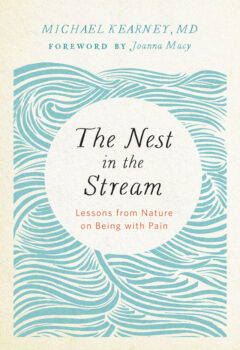
Michael Kearney MD’s holistic approach to medicine is inseparable from his connection to nature. His methods of treating pain are informed by more than 10 years of Native American sweat lodges, as well as by Celtic and Buddhist wisdom, the teachings of Carl Jung and author/activist Joanna Macy, and his studies of the therapeutic use of guided imagery, dreamwork, and active imagination.
In The Nest in the Stream, Kearney draws on his experiences as a palliative care physician to illustrate various ways of dealing with suffering, specifically those that his medical training did not address. Early in the book, he describes treating a patient with advanced cancer of the bowel. In reference to this patient and others like him he writes, “Finding medical answers is not the problem. The real challenge is something deeper, something more subtle, pervasive and intractable: those elements of human anguish that lurk within and around and beyond the physical pain, the non-physical dimensions of pain that do not have an easy fix.”
The author shares stories of nature connection; offers some daily practices that include prayer, mindfulness meditation, and gratitude ritual; and elucidates the archetype of Chiron, the wounded healer. According to Kearney, the path of the wounded healer entails staying present with one’s own pain rather than seeking to avoid it. “By staying with our woundedness, we encourage the other to stay with theirs; that is when and how healing happens,” he believes. “The wounded healer agrees with Rumi when he says, ‘Don’t turn your head. Keep looking at the bandaged place. That’s where the light enters you.’”














